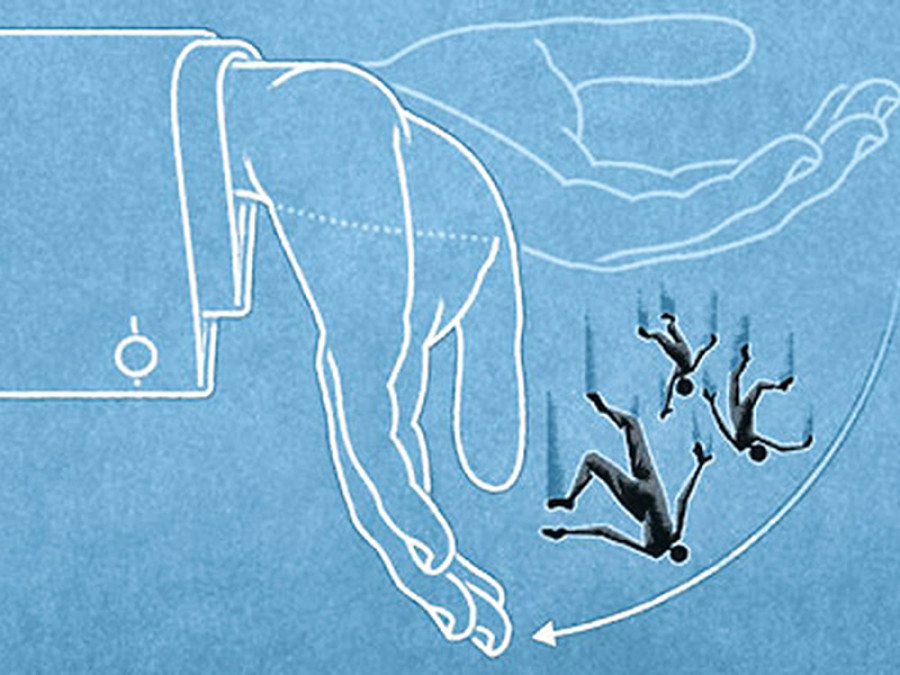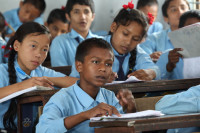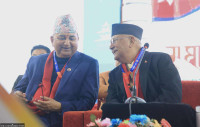Opinion
Castles in the air
Will Nepal be able to eradicate poverty by 2030 as it has promised?
Tara Kanel
The United Nations member countries have made a commitment to eradicate e global poverty by 2030. ‘Ending poverty in all its forms everywhere by 2030’ is the UN’s first goal, among a list of 17 other sustainable development goals. But will these countries be able to deliver on their promise? This question concerns not only the governments of nations where poverty still prevails in a substantial scale, but also other stakeholders, including donor countries, government- and non-government-development partners, private institutions and civil society organisations.
A research organisation, Overseas Development Institution (ODI), based in the UK, released a research report in September 2018 on the status of the implementation of the goal of ending poverty globally. The research states that currently 800 million people live with poverty. The number is likely to lessen by half, but will most probably not be completely eliminated by 2030.
This means that around 400 million people will still be living below the poverty line in and after 2030. The report’s primary focus lies on the status of 48 countries, including Nepal, which are reported to be incapable of ending poverty themselves within the stipulated period of time. This analysis is based on these countries’ current economic growth and their progress in education, health and social protection.
The probability of these countries achieving their goals seems slim as of now. And only the governments of both affluent and poor nations are to be blamed for this endless cycle of poverty. Poor nations are responsible for their sluggish domestic economic growth and for their slow progress in education, health and social protection; whereas donor nations are responsible for their reluctance of providing aids to their needy counterparts as per their commitment of 0.7 percent of their Gross National Income (GNI). These donor countries are also to be held accountable for their regressive aid distribution pattern that provides the poorest countries with a low share of development aid, despite their commitment of increasing their support to these countries. As the ODI research reveals, 66 percent of current donor funding goes to middle-income countries, which are capable to address poverty, and only 24 percent goes to low-income countries. Nepal government’s research reports, such as ‘Nepal’s Multidimensional Poverty Index 2018’, also reveals that 28.6 percent of Nepal’s population is still living in poverty. The report further disaggregates that 7 percent urban and 33 percent rural people are poor, and poverty prevalence is the worst in province 2 and 6 where one in every two persons is poor.
According to the constitution of Nepal, poverty eradication, education, health and social security are concurrent responsibilities of the federal, province and local governments. Since poverty prevails across all provinces, it is the responsibility of the federal government to implement strict policy making, standard setting and coordination with external stakeholders for resource generation and service delivery. Local and provincial governments are expected to respond to the specific needs of their population by designing and implementing development programmes in a way that compliments federal policy and programmes.
The constitution of Nepal has committed to socialism and Nepal has developed a number of progress policies. The government’s 14th development plan aims to increase economic growth from 0.8 to 7.2 percent, reduce poverty rate by 4 percent and increase life expectancy by three years in the four-year plan period starting from 2016. Transformation in agriculture system, promotion of small and middle industries, social protection and human development, social inclusion, human rights’ protection and promotion, and people friendly service delivery are some of the fundamental strategies that will help achieve the aims.
The government in its ‘Policies and Programs for FY 2018-19’ has reiterated its commitments for social justice, equality, economic prosperity and inclusion. Expansion of health facilities at the local level, health insurance, employment programes, women empowerment programs, agriculture modernisation programme, shelter support to the poor, and expansion of social protection programmes are the major highlights of the government’s policies, programmes and budgets for this fiscal year. But, are the above polices, programmes and allocated budget adequate to move the country towards socialism and to eradicate poverty?
Nepal’s constitution envisages federalism to be based on intergovernmental coordination, mutual understanding and interdependence. by adopting federalism, the state is going through a restructuring process wherein ambiguity regarding mechanisms for inter-governmental coordination, monitoring and accountability remain.
If this ambiguity persists longer, it may in the future have negative implications on social programmes such as education, health, livelihood, and social protection which are key issues for addressing poverty. Both domestic and international stakeholders have a key role in addressing the issue of poverty in Nepal. Effective coordination and mutual understanding among all stakeholders and the employment of mechanisms that will hold parties involved accountable is the best method to generate and leverage resources for eliminating poverty.
Kanel holds a master’s degree in Social Policy from the University of Melbourne, Australia.




 10.12°C Kathmandu
10.12°C Kathmandu










